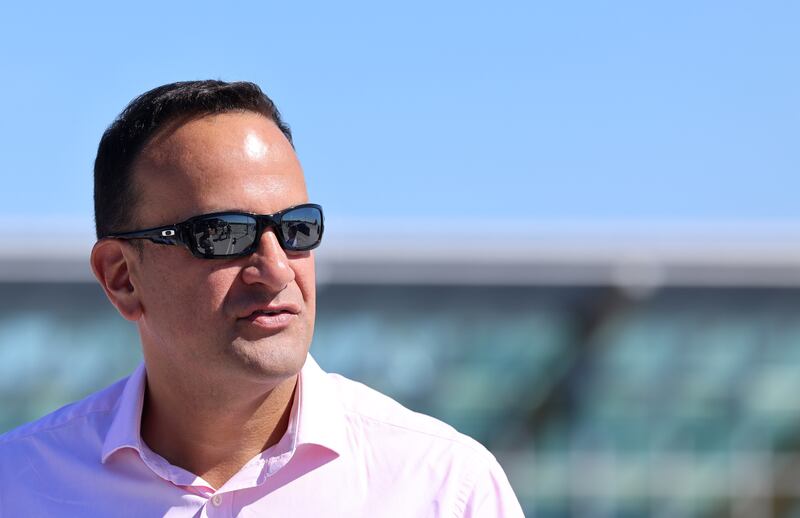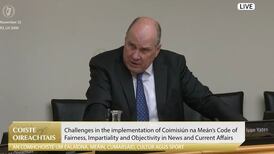Budget 2023 will be about fighting to stand still in the face of rampant inflation. What are the main themes, trends and battlegrounds that will determine the winners and losers?
How much is there to spend?
After some jiggery-pokery before the Summer Economic Statement, the Government found another €1.7 billion to play with and also gave itself some wiggle room on spending rules imposed only last year. The net result means there will be a budget package of €6.7 billion. Around €3 billion of that is gobbled up by demographics and maintaining existing services, leaving €3.7 billion to be allocated, with €1.05 billion of that for tax cuts.
Multiple sources in Government insist that figure is set in stone, with the only outstanding item to be determined the size of “once-off” measures for 2022, which could be substantial this year, aided by bonanza exchequer returns. Insiders believe the figure could be in the region of €1 billion.
READ MORE
[ Extra cost-of-living package of up to €1bn plannedOpens in new window ]
Tax and welfare
With the country in the teeth of inflationary pressures not seen for political generations, the big focus will be on households.
Fine Gael has made an early and high-profile gambit with Tánaiste Leo Varadkar’s new 30 per cent tax rate. This approach has no shortage of detractors in Government, who favour widening and indexing tax bands as it would help more taxpayers – two million “tax cases” rather than one million. On balance, it looks like the Tánaiste’s policy won’t find favour, risking a rather visible policy flop. But would he have invested so publicly in a non-starter?

The summer economic statement allowed for a tax package of €1.05 billion, but that also has to cover any other short-term options to help with the cost of living (ie, extending the excise holiday or the lower VAT rate, even though the lower VAT is not loved in Government).
The political horse-trading may settle on the size of the tax and welfare packages relative to each other. Fine Gael is likely to push for packages of a similar size.
Tax Strategy Group (TSG) papers on budgetary options published this week had an eye-catching €15-a-week increase across core welfare payments mooted in one option, but contain a range of choices, some of which focus on across-the-board increases and others of which are blended with more targeted hikes to specific payments. All of them are expensive, ranging from €1.1 billion to €1.7 billion; the Greens, especially junior minister Joe O’Brien, have made a big show of specific targeted increases as well as hikes to core payments – early budgetary positioning which has been viewed dimly in some quarters. Using once-off measures here may be an option.
A key question is how tax and welfare are balanced out, and the relationship between the size of each respective package, the mix of once-off measures and outright increases, and how that influences the rest of the budgetary arithmetic.
Hungry mouths
There are plenty of hungry mouths to feed elsewhere. For example, the budgetary staples of more gardaí, teachers and special-needs assistants will all be contained in the budget-day shopping lists. Money will be sought for schemes suggested for farmers when the climate targets were adjusted – significant financial incentives were promised, and rural Ireland will await delivery on programmes to reduce fertiliser use and increase renewable energy generation, among other things.

The capital programme for housing is significant, but given the crisis in the rental market Housing Minister Darragh O’Brien is expected to push for tax breaks for both landlords and tenants, and more capital investment in cost-rental schemes.
Defence has been the subject of a Cabinet decision to increase spending by €400 million by 2028. Government sources promise a “good start” will be made on that. Minister for Further and Higher Education Simon Harris is likely to push for student fees to be cut by something in the region of €500 as well.
Childcare is set to be a big winner – ministers have been out early and often on this. One insider jokingly remarked that having lost the votes of student-age voters and aspirant homeowners, the Government can’t afford to lose parents of young children too. Minister for Children Roderic O’Gorman has said he wants to bring childcare fees down by half on average over two budgets.
There are vagaries and complexities aplenty – children of different ages are charged different amounts in different parts of the country for different services. But he has built a path to doing so by capping fees and now plans to load money into the National Childcare Scheme, which, it is planned, will then be passed on to parents. Sources say upwards of €100 million may be needed to make a meaningful dent.
The Department of Health is coming off a two-year period where it was pushing against an open door in terms of spending during the pandemic. There are concerns in the Department of Public Expenditure regarding delivery on several fronts – a new consultant contract, recruitment and new-bed capacity, as well as bringing down waiting lists.

Nonetheless, Minister for Health Stephen Donnelly is likely to seek tens of millions for clinical strategies, expanding free contraception (by how much remains to be seen, with 17-25 year olds benefiting last year), scrapping fees for inpatient charges for adults, some form of publicly funded IVF, and another allocation for waiting lists – perhaps not as large as last year’s €350 million. More will be sought for mental health and disability budgets, while recruitment is complicated not by finances, but by failure to hit targets. How that impacts allocations will be one to watch.
Cut-rate public transport is also set to run out later this year – but that could be apportioned for under the heading of “one-off spending”, while the Greens will be making a push for more expenditure under this heading.
The once-offs
There is a still undetermined figure for one-off payments in the budget – to be spent in 2022, not next year, so separate to Budget 2023 sums. A €1 billion payload would provide a good amount of money for both targeted and broader measures. For example, the €200 electricity rebate paid this spring cost €400 million. Some form of energy credit seems highly likely. In terms of welfare payments, the tax strategy paper again may be instructive. An additional week of fuel allowance at a cost of €12.9 million makes sense, as does a €20 hike in earnings thresholds for the Working Family Payment at €50 million (it may be hard to do this on a once-off basis, though). A double welfare payment week – like a second Christmas bonus – would cost €312 million.
What else to watch?
Will the Rainy Day Fund be replenished, and by how much? We used to put €500m a year into it.
Will a public pay deal be struck? This could make a significant difference to the sums available on budget day.
How much Covid funding will become permanent, as departments seek to hold what they have?
What revenue-raising measures are under consideration? From the old reliables (more excise on cigarettes) to a windfall tax on energy companies, raising more would give room to spend more and tax less elsewhere.
What happens next?
Individual departments are writing to the Department of Public Expenditure and Reform with their budget requests. These will be thrashed out in bilateral meetings with Michael McGrath and line ministers, likely in early September. The three Coalition leaders will assess the size of once-off measures and contributions to the Rainy Day Fund in parallel, it is expected.










